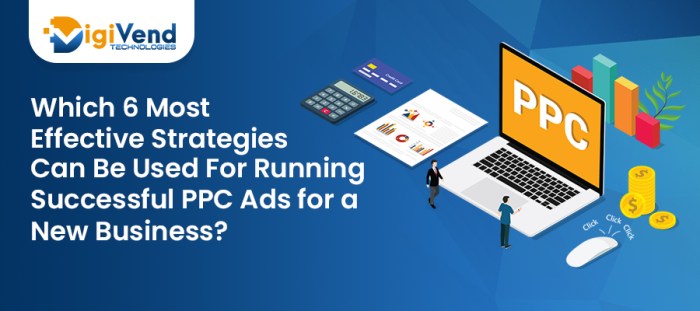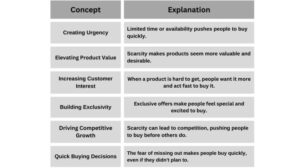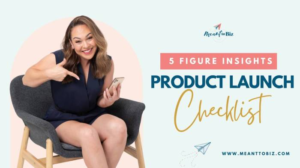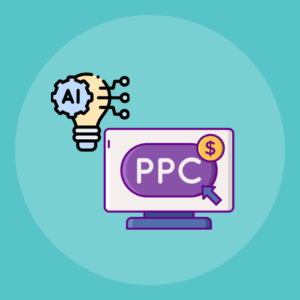
PPC ad placement strategies create a compelling framework for businesses aiming to maximize their advertising reach and return on investment. By understanding the nuances of where and how to position ads, companies can capture the attention of their target audience effectively. This narrative delves into the essential elements that make PPC ad placements not just an option but a necessity in today’s digital marketing landscape.
Exploring various platforms and their distinct features allows marketers to tailor their approaches, ensuring their ads reach the right eyes at the right time. Audience targeting plays a pivotal role in this equation, as it helps optimize placements for better visibility and engagement, ultimately driving conversion rates higher.
PPC Ad Placement Strategies

Strategic ad placements are fundamental to the success of PPC campaigns, as they directly influence visibility, click-through rates, and ultimately conversions. By understanding the nuances of where and how to position ads, marketers can leverage their budget effectively to gain the maximum return on investment. The significance of strategic ad placements lies in their ability to target potential customers at the right moment and place.
This involves selecting platforms and formats that align with the target audience’s behavior and preferences. Various platforms offer unique features that can enhance the effectiveness of PPC advertising.
Platforms for PPC Advertising
Multiple platforms are available for PPC advertising, each with distinctive characteristics that can cater to different campaign goals. Recognizing these features can help marketers choose the best fit for their needs.
- Google Ads: The largest and most widely used PPC platform, offering search ads, display ads, and video ads on YouTube. It provides extensive targeting options, including s and demographics.
- Facebook Ads: A robust platform for targeting based on user interests, behaviors, and demographics. It offers various ad formats such as carousel ads, slideshow ads, and more, suitable for engaging diverse audiences.
- Bing Ads: While smaller than Google Ads, it offers a less competitive landscape with similar capabilities and often cheaper CPCs. Bing Ads can be a great alternative for reaching specific demographics.
- LinkedIn Ads: Ideal for B2B advertising, LinkedIn allows marketers to target professionals based on job title, industry, and other business-related criteria. This platform is particularly effective for lead generation in professional networks.
- Amazon Advertising: A go-to platform for e-commerce businesses, Amazon Ads allow sellers to promote their products directly on the site. These ads can target users based on their buying behavior and search queries.
Audience Targeting for Optimizing Ad Placements
Audience targeting plays a crucial role in optimizing ad placements within PPC campaigns. By accurately defining the audience, marketers can ensure that their ads reach the most relevant users, increasing the likelihood of clicks and conversions. Utilizing audience targeting effectively can involve several strategies:
- Demographic Targeting: This involves targeting users based on age, gender, location, and even income levels. For instance, a luxury brand may focus its ads on high-income individuals aged 30-50.
- Behavioral Targeting: Marketers can target users based on their online behavior, such as past purchases, website visits, and engagement with previous ads. This helps in reaching users who have shown interest in similar products.
- Interest-Based Targeting: By identifying user interests and preferences, advertisers can tailor their messages to resonate with specific segments. For example, a fitness brand may target health-conscious individuals.
- Retargeting: This strategy allows marketers to reach users who have previously interacted with their website or ads but did not convert. It serves as a reminder and nudges them towards completing a purchase.
Effective audience targeting ensures that your ads are shown to users most likely to engage, significantly improving ROI.
Link Popularity and Its Impact on PPC
Link popularity plays a significant role in determining the performance and visibility of pay-per-click (PPC) advertisements. When a website has high link popularity, it can draw more organic traffic, which indirectly influences the effectiveness of PPC campaigns. Understanding the dynamics between link popularity and PPC can help marketers develop strategies that enhance ad visibility and conversion rates.Link popularity refers to the number and quality of backlinks pointing to a website.
A higher link popularity indicates greater authority and relevance in the eyes of search engines. This aspect not only affects organic rankings but also impacts PPC ad performance. Ads may receive increased clicks when they are associated with reputable sites, as users often trust advertisements from high-authority sources.
Strategies to Enhance Link Popularity Alongside PPC
Improving link popularity can boost PPC campaigns by driving more traffic and enhancing conversion rates. Here are several methods to consider:
- Content Marketing: Creating high-quality, shareable content encourages other websites to link back to your site, increasing your link popularity. This could include infographics, blog posts, and case studies that provide value to your audience.
- Guest Blogging: Writing articles for reputable blogs in your niche can earn you backlinks. Ensure that these blogs have a strong following and a good reputation to maximize the impact.
- Social Media Engagement: Sharing your content on social media platforms increases visibility and the likelihood of earning backlinks. Engaging with followers and industry leaders can also foster relationships that lead to link opportunities.
- Partnerships and Collaborations: Building relationships with other businesses can facilitate joint marketing efforts and backlinks to each other’s sites, enhancing both link popularity and PPC performance.
Link popularity not only drives organic traffic but also bolsters PPC ad effectiveness. When users trust the source of the ads, they are more likely to click. Moreover, higher organic rankings can lead to lower cost-per-click rates in PPC campaigns, as search engines reward sites with established authority.
Link popularity and organic traffic are closely intertwined, shaping the landscape of PPC ad effectiveness and overall marketing success.
When assessing the relationship between organic traffic and PPC, it is evident that a strong base of organic visitors can reduce the reliance on paid ads, ultimately leading to budget savings. For instance, companies like HubSpot have successfully leveraged their robust content strategies to gain significant organic traffic, allowing them to focus on PPC for targeted campaigns rather than broader reach.
Consequently, this balance can create a more cost-efficient marketing strategy.
Integrating Other Marketing Methods with PPC
Integrating PPC advertising with other marketing methods can create a powerful synergy that boosts visibility, engagement, and ROI. Blending traditional strategies with modern techniques allows marketers to maximize their outreach and drive higher conversion rates. By doing so, businesses can promote their brand more effectively and reach their target audience through multiple channels.
Link Building Framework with PPC Ad Strategies
Combining link building with PPC is essential for enhancing online presence and improving search engine rankings. A strategic approach to this integration can significantly benefit overall marketing efforts. The following framework Artikels how businesses can effectively intertwine these two strategies:
- Identify Target s: Research and select high-performing s that align with both PPC campaigns and content creation for link building.
- Create High-Quality Content: Produce engaging articles or blog posts that are shareable and relevant to your audience, while also optimized for the chosen s.
- Utilize PPC for Promotion: Use PPC ads to promote the content that is designed for link building, driving traffic to these valuable resources and encouraging shares and backlinks.
- Monitor and Adjust: Regularly analyze the performance of both PPC and link-building efforts, adjusting strategies based on data insights to maximize effectiveness.
“Link building and PPC are not just parallel strategies; they can work together to amplify results.”
Multi-Channel Approach with Paid Surveys and PPC Advertising
A multi-channel marketing strategy that incorporates paid surveys alongside PPC advertising can enhance customer insights and engagement. This approach allows brands to gather valuable data while simultaneously promoting their services through paid ads. Below are key components of this strategy:
- Survey Targeting: Use PPC ads to target specific demographics for your surveys, ensuring that you get relevant feedback from your ideal customer base.
- Incentivized Participation: Offer rewards or discounts for survey completion, which can be promoted through PPC advertisements to encourage participation.
- Analyze Results: Leverage the data collected from surveys to refine PPC ad targeting, ensuring that future campaigns resonate more effectively with your audience.
- Feedback Loop: Create a continuous feedback loop where insights from surveys inform future PPC strategies and vice versa, enhancing overall marketing efforts.
“Paid surveys can serve as both a data collection tool and a promotional tactic within PPC campaigns.”
Enhancing PPC Campaign Reach with Podcasting
Podcasting has emerged as a valuable platform for increasing the reach and engagement of PPC campaigns. Integrating podcasts into your marketing strategy provides a unique medium for storytelling and brand connection. Here are several ways podcasting can enhance PPC efforts:
- Brand Storytelling: Use podcasts to tell your brand’s story or share insights related to your industry, creating a deeper connection with listeners.
- Call to Action: Incorporate clear call-to-action messages within podcast episodes, directing listeners to your PPC campaigns or landing pages.
- Audience Engagement: Engage with listeners through Q&A sessions or feedback segments, allowing for interaction that can drive traffic to PPC ads.
- Cross-Promotion: Collaborate with other podcasters or influencers to cross-promote your PPC campaigns, expanding your reach to new audiences.
“Podcasting allows brands to create authentic connections while driving traffic to their PPC campaigns.”
Last Word

In summary, mastering PPC ad placement strategies is vital for any business looking to thrive in a competitive market. By integrating various marketing methods and enhancing link popularity, marketers can significantly improve their ad visibility and performance. This comprehensive approach not only boosts engagement but also paves the way for sustainable growth in the ever-evolving landscape of digital advertising.
FAQ Overview
What is the best platform for PPC advertising?
There isn’t a one-size-fits-all answer; it depends on your target audience and goals. Google Ads is popular for search intent, while Facebook Ads excels in social engagement.
How can I improve my ad placements?
Focus on audience targeting, use A/B testing for different placements, and analyze performance data to make informed adjustments.
What role does link popularity play in PPC?
Higher link popularity can improve organic visibility, indirectly benefiting PPC by enhancing overall brand recognition and trust.
Can I use PPC with other marketing strategies?
Absolutely! Integrating PPC with content marketing, social media, and email campaigns can create a more cohesive and effective marketing strategy.
How often should I review my PPC placements?
Regular reviews are essential; ideally, evaluate your placements weekly or bi-weekly to stay agile and responsive to performance changes.





